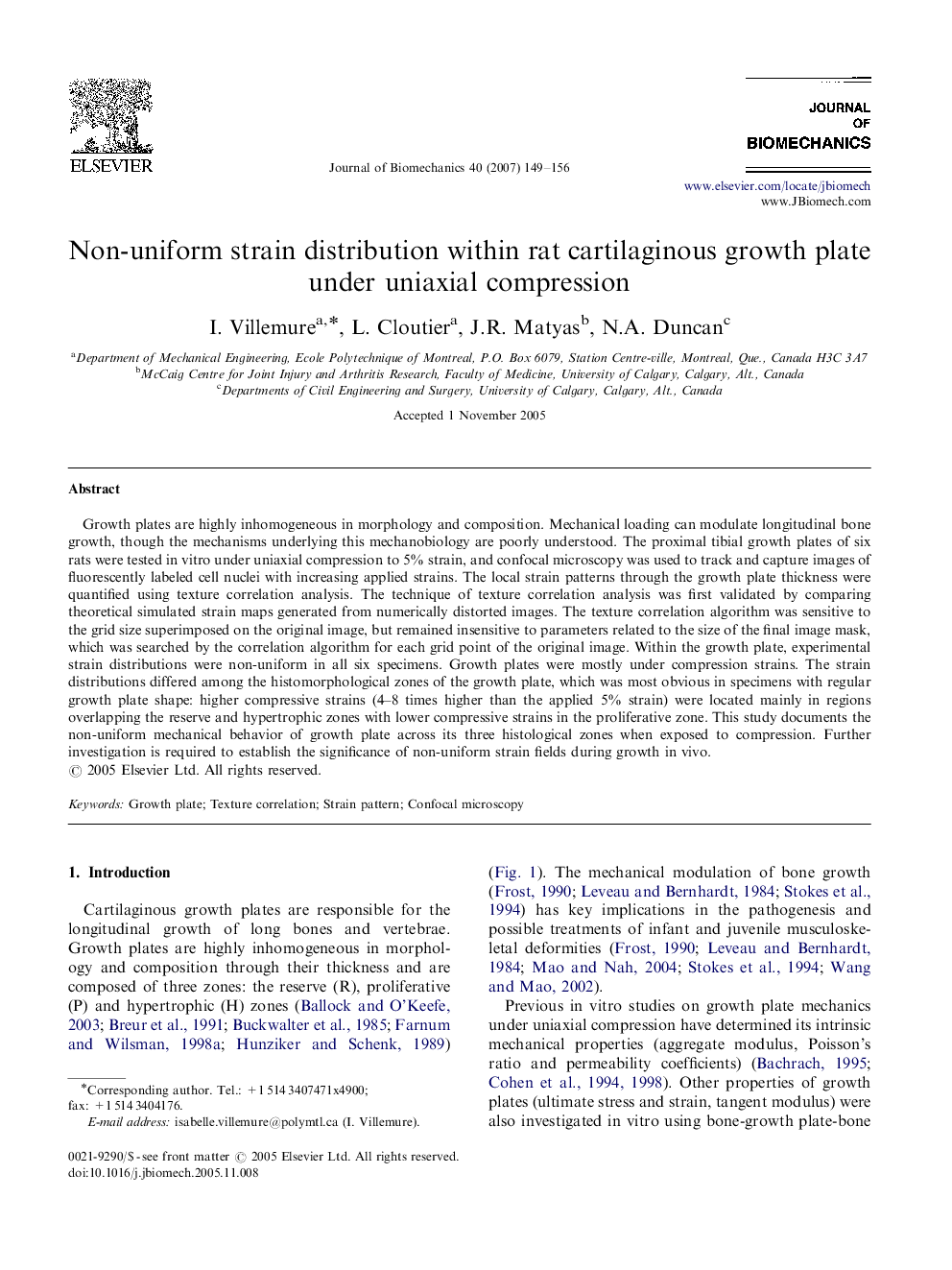| Article ID | Journal | Published Year | Pages | File Type |
|---|---|---|---|---|
| 875369 | Journal of Biomechanics | 2007 | 8 Pages |
Growth plates are highly inhomogeneous in morphology and composition. Mechanical loading can modulate longitudinal bone growth, though the mechanisms underlying this mechanobiology are poorly understood. The proximal tibial growth plates of six rats were tested in vitro under uniaxial compression to 5% strain, and confocal microscopy was used to track and capture images of fluorescently labeled cell nuclei with increasing applied strains. The local strain patterns through the growth plate thickness were quantified using texture correlation analysis. The technique of texture correlation analysis was first validated by comparing theoretical simulated strain maps generated from numerically distorted images. The texture correlation algorithm was sensitive to the grid size superimposed on the original image, but remained insensitive to parameters related to the size of the final image mask, which was searched by the correlation algorithm for each grid point of the original image. Within the growth plate, experimental strain distributions were non-uniform in all six specimens. Growth plates were mostly under compression strains. The strain distributions differed among the histomorphological zones of the growth plate, which was most obvious in specimens with regular growth plate shape: higher compressive strains (4–8 times higher than the applied 5% strain) were located mainly in regions overlapping the reserve and hypertrophic zones with lower compressive strains in the proliferative zone. This study documents the non-uniform mechanical behavior of growth plate across its three histological zones when exposed to compression. Further investigation is required to establish the significance of non-uniform strain fields during growth in vivo.
